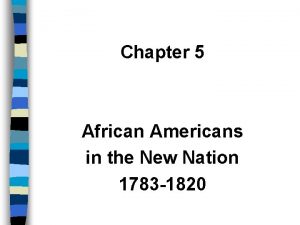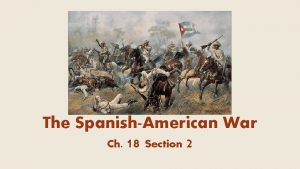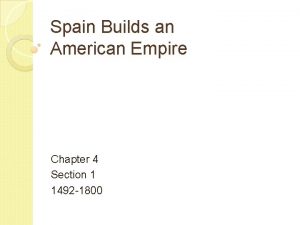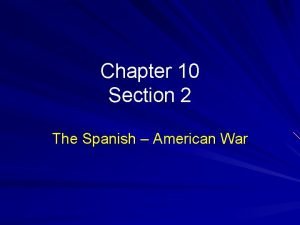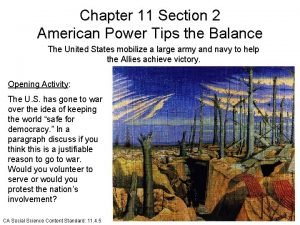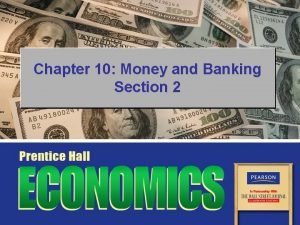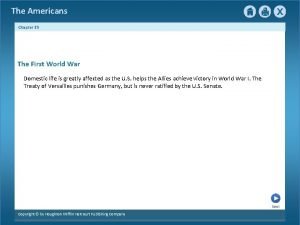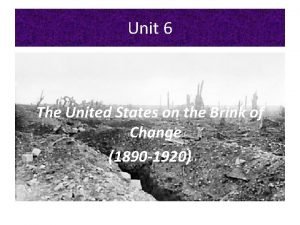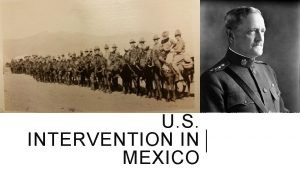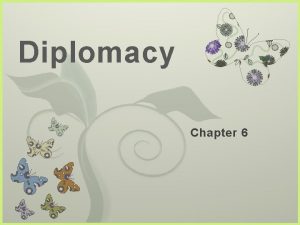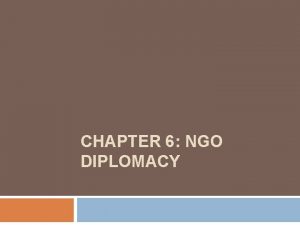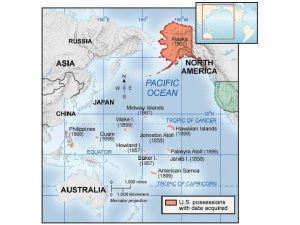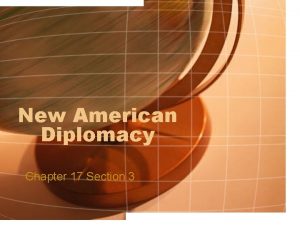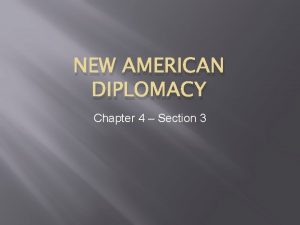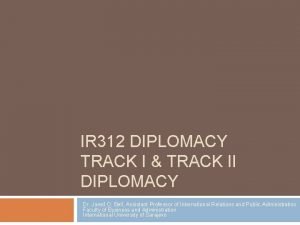CHAPTER 17 SECTION 3 New American Diplomacy I












- Slides: 12

CHAPTER 17 SECTION 3 New American Diplomacy

I. Theodore Roosevelt’s Rise to Power � Election of 1900 � President Mc. Kinley v. William Jennings Bryan (an antiimperialist) � Mc. Kinley reelected with Roosevelt as VP (charismatic, heroic, outspoken) �ASSASSINATION!

� Roosevelt becomes youngest president (42) � Believed the U. S. had the duty to shape the “less civilized” parts of the world � Roosevelt : refused to idle-America should be a world power on the world stage

II. American Diplomacy in Asia � 1899 U. S. major power in Asia- 1895 and 1900 American exports to China quadrupled � Interest in Asia was commerce not conquest � 1894 -war between China and Japan over Korea � Japan’s power concerned Russia

II. America Diplomacy in Asia � “Leasehold” became the center of the sphere of influence (an area where a foreign nation controlled economic development such railroad and mining) � Germany, France, and Britain wanted “leaseholds” � Mc. Kinley and Sec. of State Hay supported Open Door Policy in China

II. America Diplomacy in Asia � � Secret Chinese societies were organized to end foreign control “Boxers” Members started the Boxer Rebellion

II. America Diplomacy in Asia � 1906 Roosevelt won the Noble Peace Prize for ending the war between Japan and Russia � Russia recognized Japan’s territory gain and Japan agreed to stop fighting and seek no further territory

II. America Diplomacy in Asia � 1907 The Great White Fleet � 16 battleships of the US Navy was sent around the world to show the country’s military strength � Didn’t help the tensions that already existed

� � � III. Growing Presence in the Caribbean Roosevelt believed in strong global military presence “Speak softly and carry a big stick” 1901 -Hay-Peuncefote Treaty (US and Britain) gave US exclusive rights to build and control any proposed canal through Central America � Canal was viewed as vital to save time and money

Panama Canal � � Construction of the 50 mile canal took 10 years Shortened the distance from the Atlantic to Pacific by 8, 000 nautical miles

� � � III. Growing Presence in the Caribbean 1904 Roosevelt Corollary to the Monroe Doctrine stated… Chronic wrongdoing… may in America, as elsewhere, ultimately require intervention by some civilized nation, and in the Western Hemisphere the adherence of the United States to the Monroe Doctrine may force the United States, however reluctantly, in flagrant cases of such wrongdoing or impotence, to the exercise of an international police power First in applied to Dominican Republic US became resented in Latin America

III. Growing Presence in the Caribbean � � Howard Taft continued Roosevelt’s policies Put less influence on military force and more on helping American industry � Believed that if American business leaders supported Latin America and Asian development everyone would benefit Increase trade, profits, countries would rise out of poverty and social disorder �Taft’s “Dollar Diplomacy” � “substitute dollars for bullets”
 Chapter 5 lesson 3 new american diplomacy
Chapter 5 lesson 3 new american diplomacy Chapter 5 african american in the new nation
Chapter 5 african american in the new nation Chapter 18 section 2 the spanish american war
Chapter 18 section 2 the spanish american war Chapter 8 section 1 latin american peoples win independence
Chapter 8 section 1 latin american peoples win independence The american revolution chapter 6 section 4
The american revolution chapter 6 section 4 Chapter 4 section 1 spain builds an american empire
Chapter 4 section 1 spain builds an american empire Chapter 10 section 2 the spanish american war answer key
Chapter 10 section 2 the spanish american war answer key Chapter 6 section 4
Chapter 6 section 4 American power tips the balance
American power tips the balance Chapter 10 section 2 the history of american banking
Chapter 10 section 2 the history of american banking Chapter 19 the americans
Chapter 19 the americans Dollar diplomacy definition us history
Dollar diplomacy definition us history Moral diplomacy
Moral diplomacy

